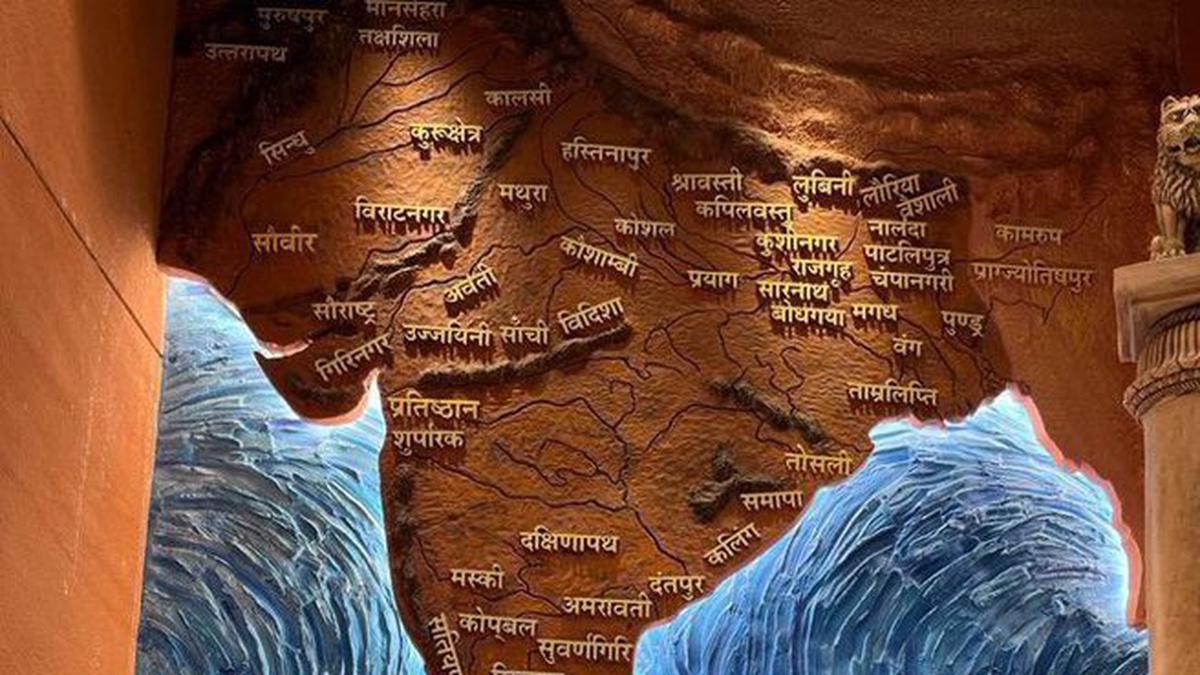
Akhand Bharat mural in new Indian Parliament triggers row in Nepal
The Hindu
A mural in the new Parliament, which is interpreted as showing Akhand Bharat (undivided India), has been criticised by Nepali politicians across party lines. It shows Lumbini, Buddha’s birth place, indicating India’s claims over the region
A major controversy has broken out in Nepal over the mural of the Indian subcontinental landmass in the newly inaugurated Parliament building. The mural has been interpreted as a map of Akhand Bharat or undivided India, which has drawn angry responses from Nepali political leaders across party lines.
The mural shows Lumbini, the birth place of Gautama Buddha, indicating India’s claims over the region. Nepal considers Lumbini as one of the major cultural centres on the Nepalese map.
“The controversial mural of ‘Akhand Bharat’ in the recently inaugurated new Parliament building of India may stoke unnecessary and harmful diplomatic row in the neighbourhood including Nepal. It has the potential of further aggravating the trust deficit already vitiating the bilateral relations between most of the immediate neighbours of India,” former Nepali Prime Minister Baburam Bhattarai said in a statement.
Editorial | Symbols and substance: On the inauguration of the new Parliament building and beyond
The mural had drawn attention on May 28 when Prime Minister Narendra Modi had inaugurated the new Parliament building and dedicated it to the nation. Parliamentary Affairs Minister Pralhad Joshi was among the first to describe the mural as “akhand Bharat”.
The issue erupted in the Nepalese media even as Nepali Prime Minister Prachanda started his India tour and held official talks with Mr. Modi on Thursday.
The issue has once again triggered memories of the Kalapani dispute, which erupted in November 2019 when India published a political map showing the Kalapani region as part of Uttarakhand. Nepal, in response, had published a map asserting its control over Kalapani.













